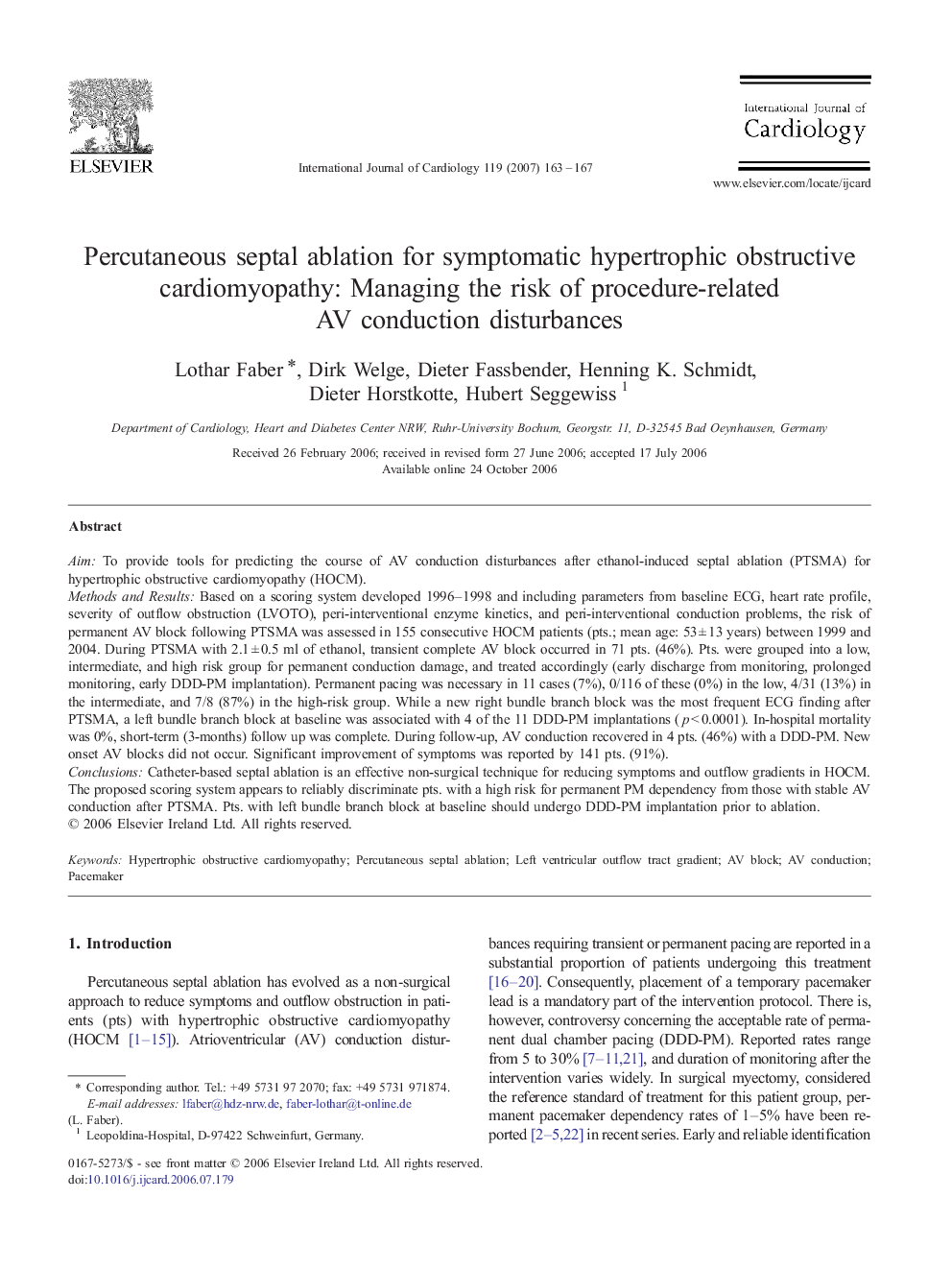| Article ID | Journal | Published Year | Pages | File Type |
|---|---|---|---|---|
| 2935155 | International Journal of Cardiology | 2007 | 5 Pages |
AimTo provide tools for predicting the course of AV conduction disturbances after ethanol-induced septal ablation (PTSMA) for hypertrophic obstructive cardiomyopathy (HOCM).Methods and ResultsBased on a scoring system developed 1996–1998 and including parameters from baseline ECG, heart rate profile, severity of outflow obstruction (LVOTO), peri-interventional enzyme kinetics, and peri-interventional conduction problems, the risk of permanent AV block following PTSMA was assessed in 155 consecutive HOCM patients (pts.; mean age: 53 ± 13 years) between 1999 and 2004. During PTSMA with 2.1 ± 0.5 ml of ethanol, transient complete AV block occurred in 71 pts. (46%). Pts. were grouped into a low, intermediate, and high risk group for permanent conduction damage, and treated accordingly (early discharge from monitoring, prolonged monitoring, early DDD-PM implantation). Permanent pacing was necessary in 11 cases (7%), 0/116 of these (0%) in the low, 4/31 (13%) in the intermediate, and 7/8 (87%) in the high-risk group. While a new right bundle branch block was the most frequent ECG finding after PTSMA, a left bundle branch block at baseline was associated with 4 of the 11 DDD-PM implantations (p < 0.0001). In-hospital mortality was 0%, short-term (3-months) follow up was complete. During follow-up, AV conduction recovered in 4 pts. (46%) with a DDD-PM. New onset AV blocks did not occur. Significant improvement of symptoms was reported by 141 pts. (91%).ConclusionsCatheter-based septal ablation is an effective non-surgical technique for reducing symptoms and outflow gradients in HOCM. The proposed scoring system appears to reliably discriminate pts. with a high risk for permanent PM dependency from those with stable AV conduction after PTSMA. Pts. with left bundle branch block at baseline should undergo DDD-PM implantation prior to ablation.
